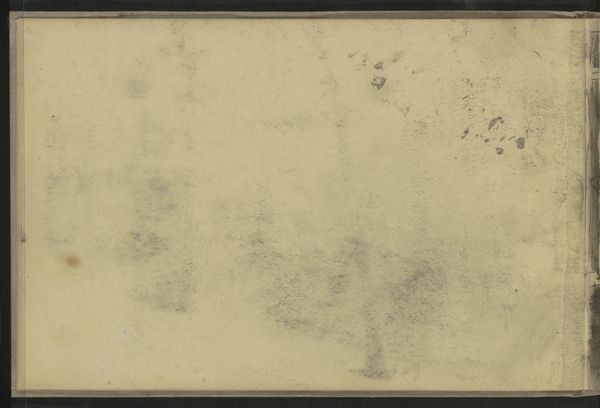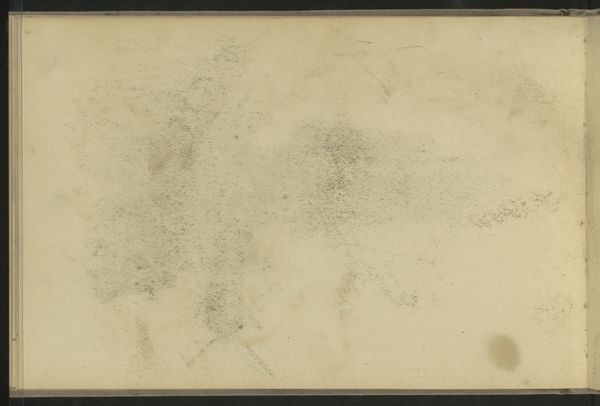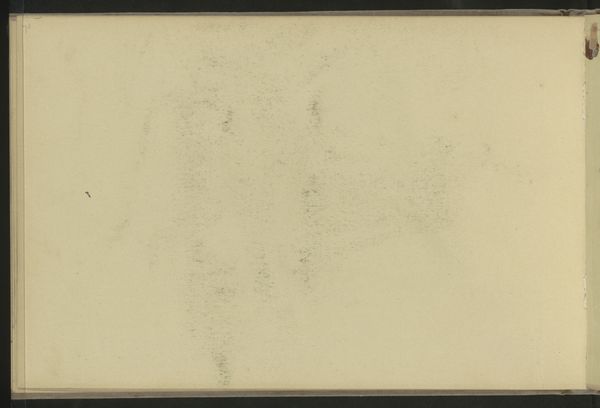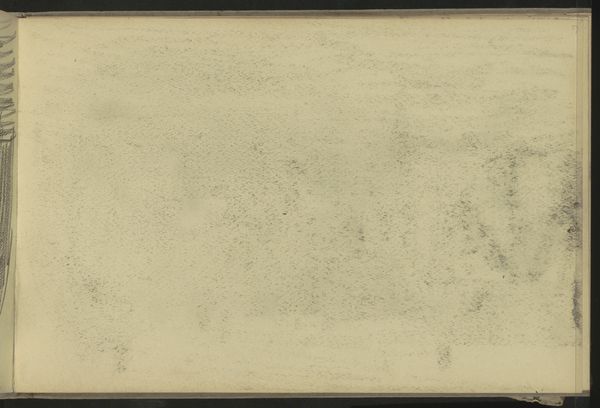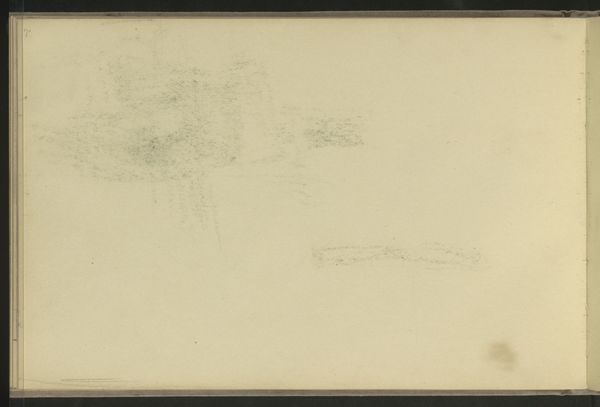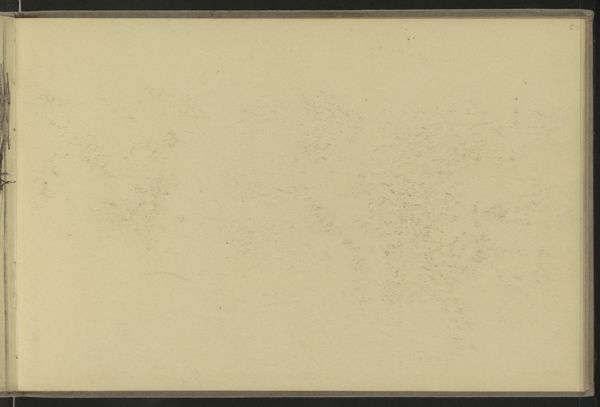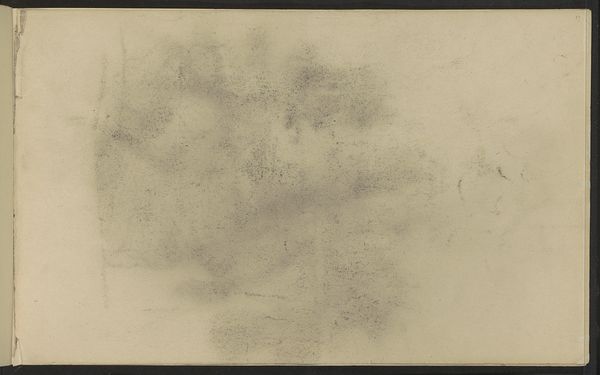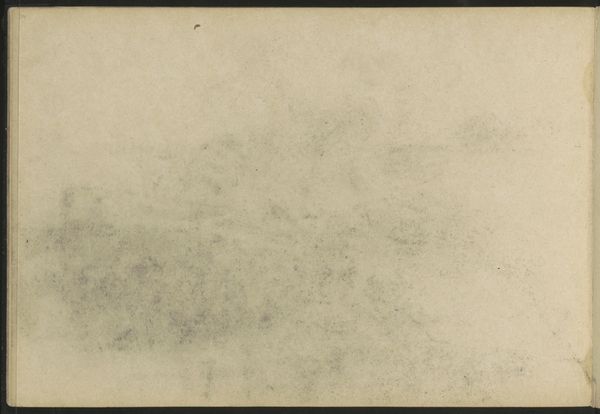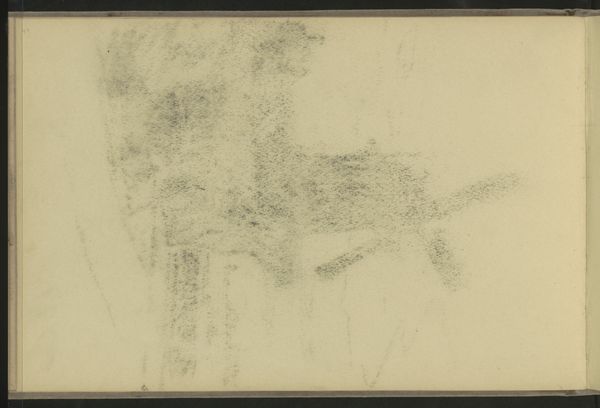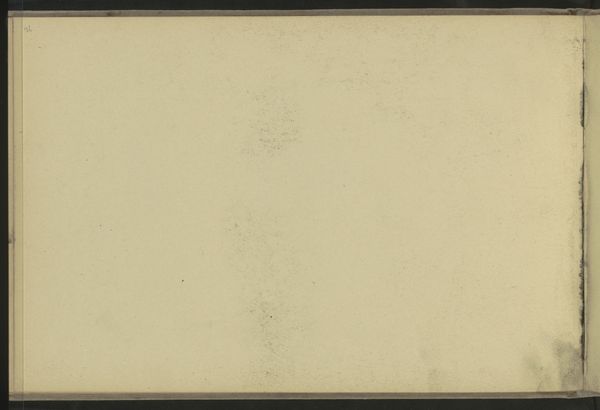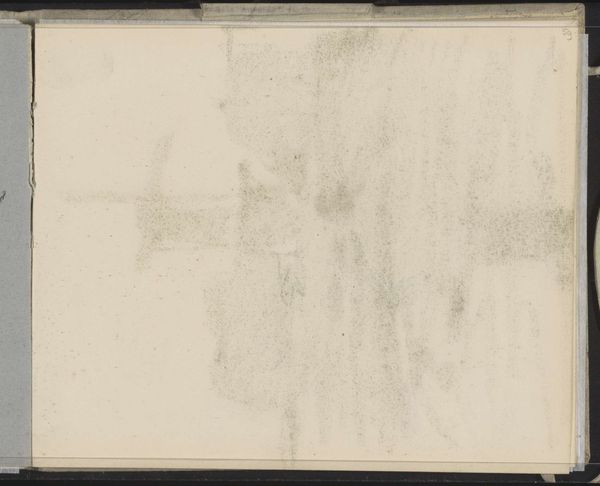
Copyright: Rijks Museum: Open Domain
Editor: We're looking at "Abklatsch van de krijttekening op pagina 48," a graphite drawing on paper, dating from 1901-1907, by Willem Witsen. The work evokes a rather ghostly feeling, with only vague impressions of a landscape. What stands out to you about the composition of this piece? Curator: Indeed, the composition, or perhaps the lack thereof, is striking. Note how Witsen disrupts traditional landscape conventions. There's no clear horizon line, no strong focal point. Instead, we see a series of indistinct marks distributed somewhat evenly across the pictorial plane. What does this dissolution of form communicate, would you say? Editor: Perhaps it's about the fleeting nature of impressions? The ephemerality of a memory fading over time? Curator: Precisely. Witsen uses the materiality of graphite and the support of paper to explore the very act of seeing. Notice the tonal variations within the gray scale. There's a push and pull, an ambiguity that engages the viewer. Where does the "landscape" begin and the surface of the paper end? The indistinct application challenges our perception. Is the artist suggesting that seeing is inherently subjective, a process of construction rather than passive reception? Editor: I hadn't thought about it that way before. It’s less about capturing a scene and more about showing us how we perceive scenes, if that makes sense. It makes you think about the process of image creation more abstractly, almost. Curator: Exactly. By dissecting form, Witsen compels us to confront our own perceptual mechanisms. So what was your takeaway looking at the intrinsic qualities, such as composition and marks, now? Editor: It's made me rethink how a drawing, or any artwork, can be less about direct representation and more about a kind of visual philosophy. Thank you.
Comments
No comments
Be the first to comment and join the conversation on the ultimate creative platform.
